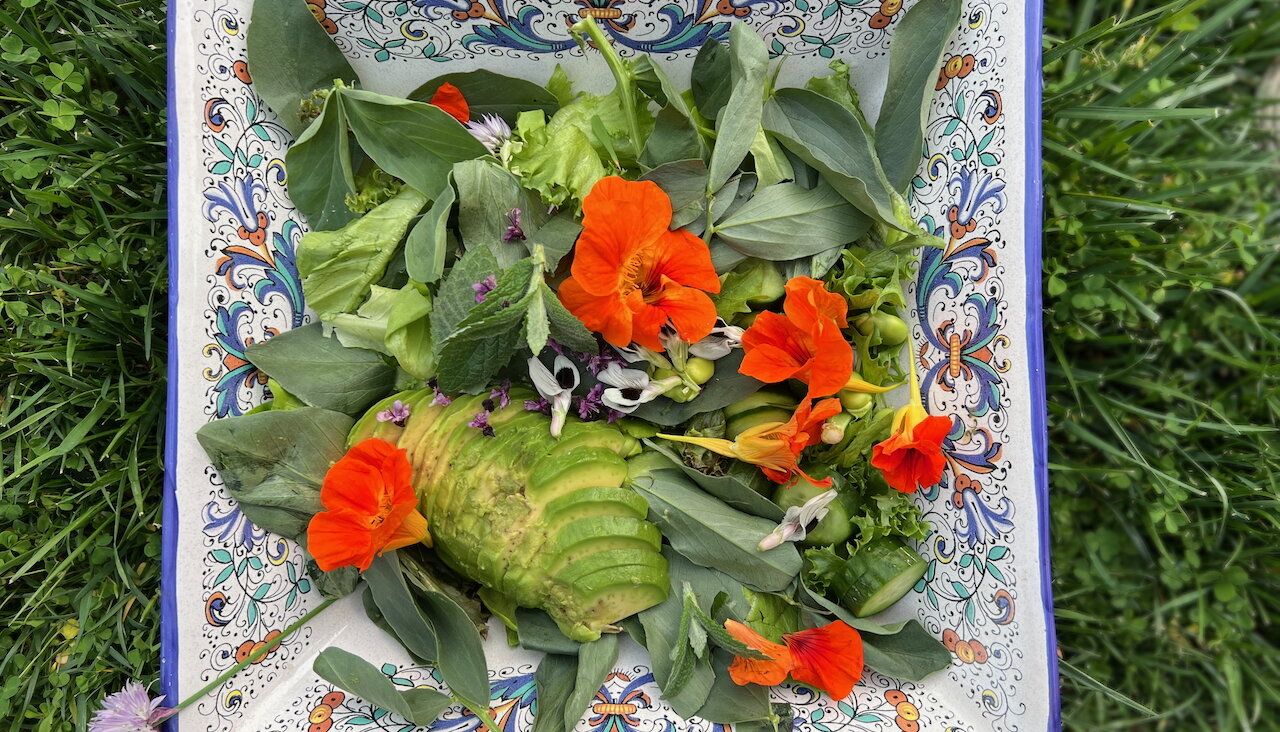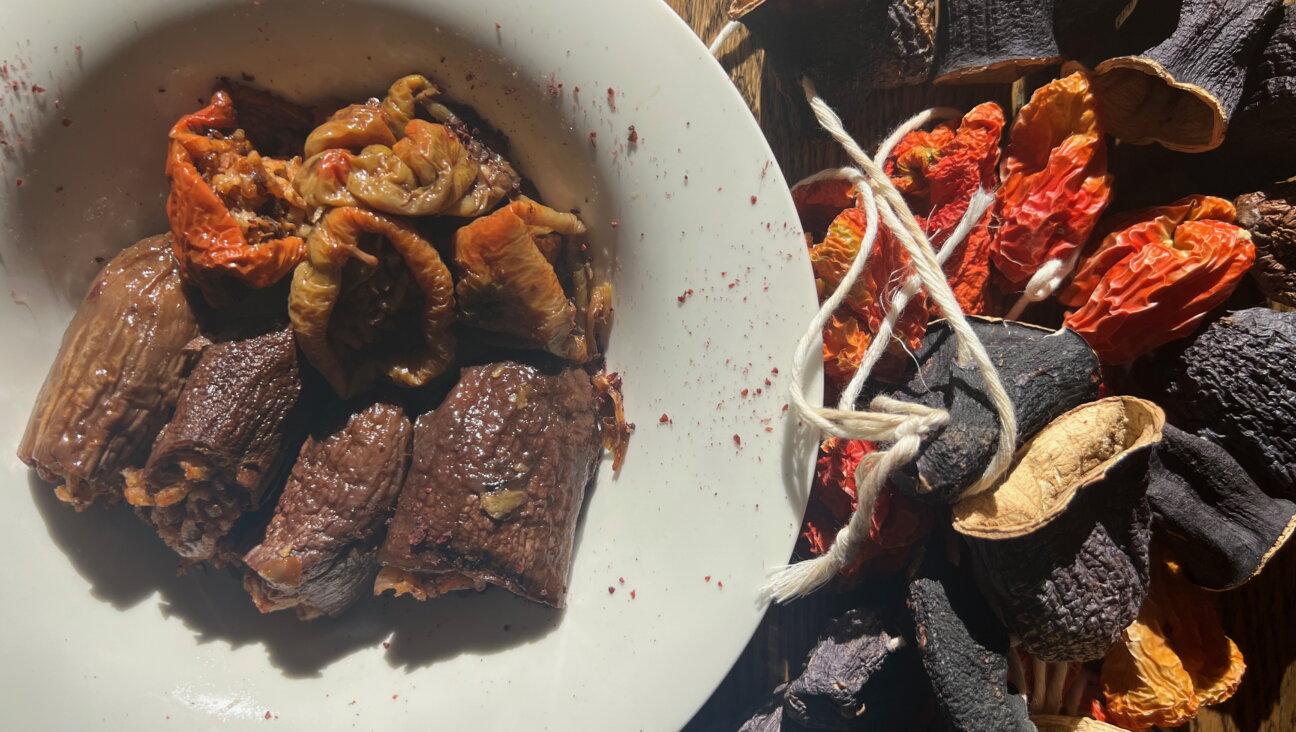Chayote, Game-Changing Summer Veggie

I recently read an article in a culinary magazine about a tasty fruit called a cherimoya, which is also known as a custard apple. I have to imagine that unless you have already tried this tropical fruit, and decidedly don’t like it, there would be no reason not to try a fruit that has the word ‘custard’ in its name.
Weeks passed, and the cherimoya information buried itself in the back of my mind knowing I’d have a hard time finding one. One day as I was running through the grocery store at my normal chaotic pace, I noticed a small, green, apple-like thing stacked between the yucca root and forlorn cactus leaf. Ecstatic that I had found this delicious custard apple, I tossed one into my cart.
As I was putting away my groceries, I rolled this new fruit in my hand, getting to know its smooth skin and defining cavernous, mouth-like bottom. That’s when I noticed the sticker, which read ‘Chayote’. I was confused, assuming that perhaps chayote was another name for cherimoya. Apparently, I was not the only person to have made this mistake because a quick Google search of ‘chayote vs. cherimoya’ produced hundreds of thousands of results.
Disappointed that I hadn’t found the deliciously-described desert fruit, I let the funky little chayote – also known as ‘green squash’ among many other names – sit in the drawer. For more than a week it sat in the drawer, though I often poked it to see if it was getting mushy or rotten (it did not), until it was literally the only thing left in my refrigerator and the grocery store was already closed. Knowing the choice was between cooking this not-cherimoya or buying lunch, which for me is an act of true desperation, I went back to the computer and googled again, this time for “chayote recipes”.
What I discovered was a world of chayote enthusiasts who like to julienne the apple-like (raw apple, not custard apple) squash on top of their tacos. Originally hailing from Mexico and sometimes also called “vegetable pear”, chayote are now widely grown in tropical areas, and have also made their way into my Brooklyn grocery store (feel less bad if you live in California, where these veggies reportedly grow very well). Chayotes are mostly water, and therefore low in calories, and have a really nice crispness too them that will no doubt be solace as the summer weather sets in.
While the skin of a cooked chayote can be consumed, I read online that when peeled, the chayote oozes a sticky, slippery juice and is recommended to be peeled under running water. Curious, I started to shave off the skin, but within 3 or 4 strokes the squash started to feel like a bar of wet soap. I nibbled on a few of the raw chayote bits I chopped and found them to be a bit bland on their own – like jicama only duller. So I chopped up some flavorful accoutrements, including garlic and ginger and tossed them into the pan with the chayote. Within just 7 or 8 minutes, the squash had given in slightly to a softened texture, like a cooked potato.
Despite not being a custard-apple, this vegetable pear won my heart. Low in calories, but high in fiber this is a nutrition packed perennial that I will definitely be buying again. I imagine shaving them down into thin slices on a mandolin, perhaps with some radishes for a crunchy salad; julienning them along with some carrots for a spunky crudité, or adding them as replacements for recipes calling for potatoes. I’m excited to experiment with steaming chayote chunks and running them through the immersion blender for a twist on mashed potatoes (cauliflower mash is so passé). And, although it’s not local, I’m excited to have found something new to add to my repertoire. But really, if you know where to find a cherimoya in Brooklyn, please let me know.
Chayote with Garlic and Ginger
½ tablespoon butter (or oil)
1 chayote, peeled and chopped
3 cloves garlic, finely chopped
2 teaspoons ginger, finely chopped
½ teaspoon red pepper flakes
Salt and pepper to taste
Optional: 1-2 teaspoons chopped fresh parsley
Melt butter or fat of your choice into a medium sized pan, being careful not to burn.
Toss in chayote, garlic and ginger and sauté over medium-low heat for 3-4 minutes. Add red pepper flakes and salt and pepper. Cook until fork-tender.
For extra flavor, toss with fresh parsley to garnish.
Liz Traison is a Thought-Leadership and Capacity-Building program associate at Hazon, specializing in food education. She is an integrative health coach and founder of Eat the Change, dedicated to helping individuals eat well, feel well, and do good. She is also a 2014 PresenTense fellow, working on a blog called From Where I Stand that captures that narratives of women working in the Jewish non-profit world.
Photo Credit: Thiago Gama de Oliveria (Flickr)
The Forward is free to read, but it isn’t free to produce

I hope you appreciated this article. Before you go, I’d like to ask you to please support the Forward.
Now more than ever, American Jews need independent news they can trust, with reporting driven by truth, not ideology. We serve you, not any ideological agenda.
At a time when other newsrooms are closing or cutting back, the Forward has removed its paywall and invested additional resources to report on the ground from Israel and around the U.S. on the impact of the war, rising antisemitism and polarized discourse.
This is a great time to support independent Jewish journalism you rely on. Make a gift today!
— Rachel Fishman Feddersen, Publisher and CEO
Support our mission to tell the Jewish story fully and fairly.
Most Popular
- 1

Fast Forward Ye debuts ‘Heil Hitler’ music video that includes a sample of a Hitler speech
- 2

Opinion It looks like Israel totally underestimated Trump
- 3

Culture Cardinals are Catholic, not Jewish — so why do they all wear yarmulkes?
- 4

Fast Forward Student suspended for ‘F— the Jews’ video defends himself on antisemitic podcast
In Case You Missed It
-

Fast Forward In first Sunday address, Pope Leo XIV calls for ceasefire in Gaza, release of hostages
-

Fast Forward Huckabee denies rift between Netanyahu and Trump as US actions in Middle East appear to leave out Israel
-

Fast Forward Federal security grants to synagogues are resuming after two-month Trump freeze
-

Fast Forward NY state budget weakens yeshiva oversight in blow to secular education advocates
-
Shop the Forward Store
100% of profits support our journalism
Republish This Story
Please read before republishing
We’re happy to make this story available to republish for free, unless it originated with JTA, Haaretz or another publication (as indicated on the article) and as long as you follow our guidelines.
You must comply with the following:
- Credit the Forward
- Retain our pixel
- Preserve our canonical link in Google search
- Add a noindex tag in Google search
See our full guidelines for more information, and this guide for detail about canonical URLs.
To republish, copy the HTML by clicking on the yellow button to the right; it includes our tracking pixel, all paragraph styles and hyperlinks, the author byline and credit to the Forward. It does not include images; to avoid copyright violations, you must add them manually, following our guidelines. Please email us at [email protected], subject line “republish,” with any questions or to let us know what stories you’re picking up.















